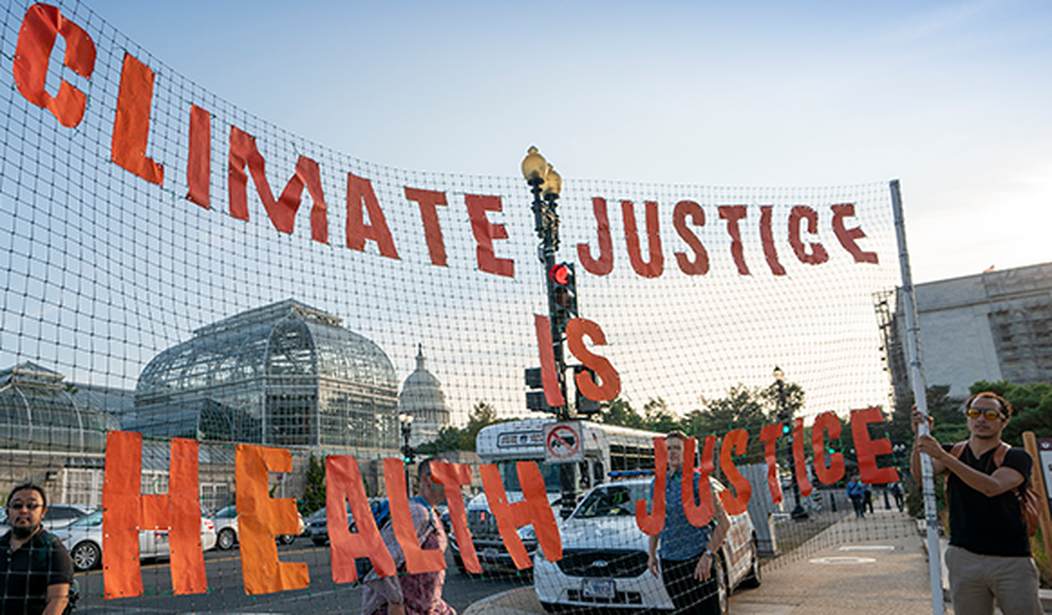On the heels of two Environmental Protection Agency (EPA) rules that are antagonistic toward fossil fuels, the Federal Energy Regulatory Commission (FERC) just finalized its own rule that once again has renewable energy proponents applauding. In a 2-1 vote, the agency is now requiring grid operators to plan and build transmission lines that can support rapidly growing electricity demand at least 20 years into the future.
It is essentially a cloak to advance a political objective. Former Commissioner Bernard McNamee recently stated, “We don’t have a transmission crisis in this country. This is all driven by renewable developers who are frustrated.”
Environmental groups are keen on the idea that this paves the way for a fossil fuel exit. The Sierra Club went so far as to declare at the top of its press statement that “new requirements will . . .. allow for retirement of dirty energy sources.” Earthjustice is completely on board claiming, “inadequate transmission infrastructure has been thwarting the clean energy transition.”
The climate obsessed are driven by an agenda that rids the world of all fossil fuels, even if that means less reliable, less affordable energy.
The biggest concern surrounding the FERC decision is the possibility that red states could be forced to pay for green energy projects of neighboring blue states. The one opposing vote came from Mark Christie who says the rule “utterly fails to protect consumers” by facilitating a major transfer of wealth to wind and solar transmission developers and “influential powerful corporations with preferences as to the types of power they want to purchase.”
Recommended
In his dissent, Christie references the Potomac Appalachian Transmission Highline (PATH) project that was driven by policy goals and approved by FERC, and left customers on the hook for the bill. Consumers paid close to $250 million for something that was never built nor found necessary by state regulators.
While FERC’s final rule includes a provision that “customers pay only for projects from which they benefit,” it is not clearly defined; such a declaration could be broadly interpreted. The PATH project most likely did not intend to charge utility customers for unused services; and yet, in the end, it did.
Senator Cramer (R-ND) penned a letter to the commissioners last fall, pointing out that developers and regulators could easily skew a cost-benefit analysis in their favor to “socialize costs” across a broad base of rate payers. He reminded the Commission they are responsible for energy affordability and reliability, not “nationalizing the grid to fit the environmental whims of progressive states.” Cramer called the recent ruling “an assault on the sovereignty of the states.”
FERC seems to ignore the warnings of the National Electric Reliability Corporation’s latest Long-term Reliability Assessment, which identified seven regions at high or elevated risk of energy shortfalls. The resource mix in these areas, which includes vast amounts of renewable energy, could fail to deliver electricity.
It is no surprise that our electric grid has some issues. But is it maybe because we are retiring reliable fuels like coal and natural gas and trying to replace them with intermittent, low-capacity energy sources? Wind and solar, for instance, have difficulty keeping pace with fossil fuels and have fallen short multiple times. They are especially vulnerable during situations that demand high levels of performance.
The renewable energy cheerleaders also repeatedly tell us that these forms are cheaper and will save rate payers on electricity costs. But the wind and solar track record says otherwise.
A study conducted in 2019 discovered that electricity prices rose 11 percent seven years after states implemented Renewable Portfolio Standards (RPS); they increased 17 percent after 12 years. The states with more stringent policies generally have much higher electric rates than the national average, while the states without RPS have the lowest. California, with the most aggressive renewable mandates, saw its rates rise seven times faster than the rest of the country in a span of just ten years. And since 2020, the Golden State’s electricity rates have risen 40 percent, even after adjusting for inflation.
States that choose not to rely heavily on renewable energy should not be forced to financially support those that do. As Cramer admonishes, “FERC must respect the policy differences between all states, not just those pushing for a rapid, costly transition to intermittent resources in need of new transmission.”
Kristen Walker is a policy analyst for the American Consumer Institute, a nonprofit education and research organization. For more information about the Institute, visit www.theamericanconsumer.org or follow us on Twitter @ConsumerPal.

























Join the conversation as a VIP Member